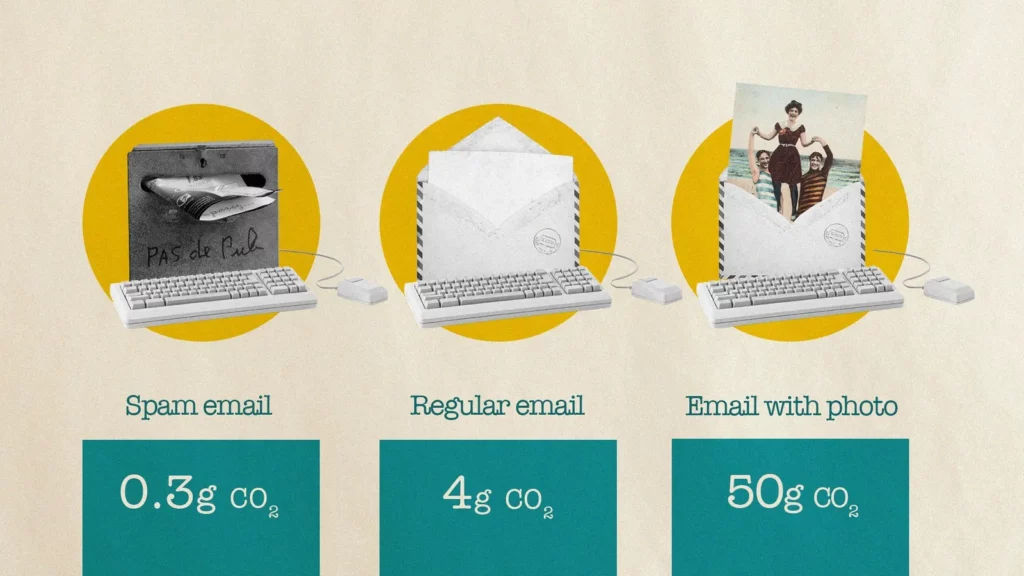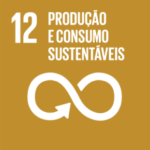
New app connects farmers and consumers around food sustainability
Through the app, the aim is to promote dietary diversification and increase awareness of cultivating and consuming more underutilized crops, such as legumes, cereals, and
We didn't find any happenings mapped to your criteria.
Try the traditional search to find articles not yet mapped with RUA.
We didn't find any happenings mapped to your criteria.
Try the traditional search to find articles not yet mapped with RUA.
We didn't find any happenings mapped to your criteria.
Try the traditional search to find articles not yet mapped with RUA.
We didn't find any happenings mapped to your criteria.
Try the traditional search to find articles not yet mapped with RUA.
Deleting email recipients, choosing greener browsers, or recycling electronic equipment are all practices that have an impact on the planet.
Did you know that nowadays digital pollution is already higher than in the aviation sector? By 2025, it is estimated that it will overtake the automotive sector, and by 2030 it will be the largest emitter of carbon. Per year, the CO2 emissions generated by using Facebook are equivalent to 645,000 flights between Paris and New York. One hour at Tik Tok equals the amount of CO2 of a 60 kilometer trip in a gasoline car. A single email sent, is equivalent to the CO2 emitted by a light bulb burning for 25 minutes.
All our digital actions consume electricity, mostly from fossil fuels, and water, used in the manufacturing of the equipment and in the cooling of the data centers. The problem will continue to grow with the increase in remote jobs, the volume of individual electronic equipment, the dilution of geographical barriers, and the provision of streaming apps and social networks.
Peggada has put together 6 tips for you to reduce your electronic waste and make greener decisions:
1. Recycle technology and opt for second-hand devices
The manufacturing process of electronic equipment is one of the main polluters and CO2 emitters. Whenever possible choose to repair or donate to schools, hospitals or families in need. If it is not recoverable, deposit it in proper places (the manufacturers themselves, electronics or technology stores) so that it can be safely dismantled and reused. If you really need to buy a new device, invest in the reconditioned or second-hand ones. Opt for recyclable materials, energy-efficient materials, or eco-friendly and conscious cooking devices.
2. Clean your devices
The data stored on servers, computers, smartphones and tablets consume memory and energy. By doing “digital hygiene” you can improve the performance and extend the life cycle of your devices. It starts by cleaning up the computer’s desktop, removing temporary files, organizing documents into folders, and making a selection of the photos, audios and videos, excluding the duplicates or the ones without quality. In your smartphone and tablet, delete the applications you don’t use and prefer the Lite versions (lighter, save space and resources).
Clean up your cache and history of SMS and Whatsapp messages, and don’t forget about obsolete groups (courage!). Set a time limit for data storage on your phone or cloud, or disable this option.

3. Organize your mailbox
Have you ever envied someone for their immaculate mailbox? You can be that person too. Delete the heaviest emails with attachments, deactivate subscriptions you don’t want to receive. Think twice before sending an email: the distance traveled between you and the recipient, and the amount of people in an email make a difference in the impact of CO2 emissions (6g CO2 per person).
When replying to an email conversation, you don’t need to resend the original attachments. From that conversation, you can keep only the most recent answer and delete the others. Empty the trash can throughout the cleanup. If you need to send an email with heavy files, compress them or use platforms like WeTransfer, Dropbox, Cloud or Drive, and just include the download link in the email.
Choose a signature without images and try to keep youremails to zero! You might find the option to archive emails or reschedule them to return to your inbox later useful. Out of sight, out of mind!
4. Take a look at your social networks
Streaming videos consume the most energy and cause the most pollution. So Tik Tok, Pinterest, Snapchat or Instagram are at the top of the apps with the highest carbon impact. Set a streaming consumption limit and choose to download files in reduced quality. You can also set rest periods and maximum screen time, as well as mute notifications and hibernate some apps.
On Instagram, Facebook, Twitter or LinkedIn clean up your network of followers and pages to follow, clear your browsing history and delete posts and chats. In most social networks you can disable the automatic playback of videos – which will greatly help to reduce the power consumption of your device. Browsing in anonymous mode can avoid unnecessary data storage.
5. Adjusts the brightness of the screens
In your devices’ power settings, you can set periods of inactivity – nap or hibernate mode – to save battery consumption and increase the device’s lifespan. By adjusting the brightness of your screen you will reduce power consumption, and the amount of blue light radiation emitted can be regulated using appropriate filters.

6. Choose greener search and storage engines
Ecosia allocates part of its profits to environmental protection is transparent in managing data privacy and climate commitment (read our article here). Brave is a search engine with a focus on browsing privacy and data storage, which incorporates with Ecosia, Duck & Go does not collect user data and provides the same search data to everyone. Additionally it has renewable energy credits and carbon neutrality commitments until 2030. You can also learn more about options such as Ocean Hero, Ekoru, Parusia or Elliot For Water.
Choosing a greener greener cloud storage service is an important step, especially for companies, which can reduce the footprint of their data center and save energy. Opt for services that show transparency in their carbon footprint and commit to the goal of neutrality. That use renewable energy sources and generate green power, and whose buildings have energy-certified construction.
Take note about how much space your devices take up, to measure the volume of deleted data and your contribution to the planet. 1MB is equivalent to 19g CO2 and 1KWh is equivalent to 475g CO2 as a global average, according to Cyber World Cleanup Day. It was in France that this digital cleanup initiative gained expression, to spread to other countries in Europe, learn more here. Now that you have gained a little more awareness, don’t forget to be an agent of change.


Through the app, the aim is to promote dietary diversification and increase awareness of cultivating and consuming more underutilized crops, such as legumes, cereals, and

There’s a new app that lets you record the hours you spend volunteering, which can be turned into benefits for the organizations where this practice

The Porto City Council, in partnership with Hortee, a start-up specializing in the sale of fresh produce, has launched an app designed to make the

This article promotes an action that encourages the reduction of waste generation through prevention, reduction, recycling, and reuse.
➡️ To discover more businesses that are aligned with Sustainable Development Goal 12 “Sustainable Production and Consumption” click here.
➡️ For news, tips and interviews about this topic, click here
➡️ Want to know more about the 17 United Nations Sustainable Development Goals? Click here
Esta publicação também está disponível em:
![]() Português (Portuguese (Portugal))
Português (Portuguese (Portugal))

